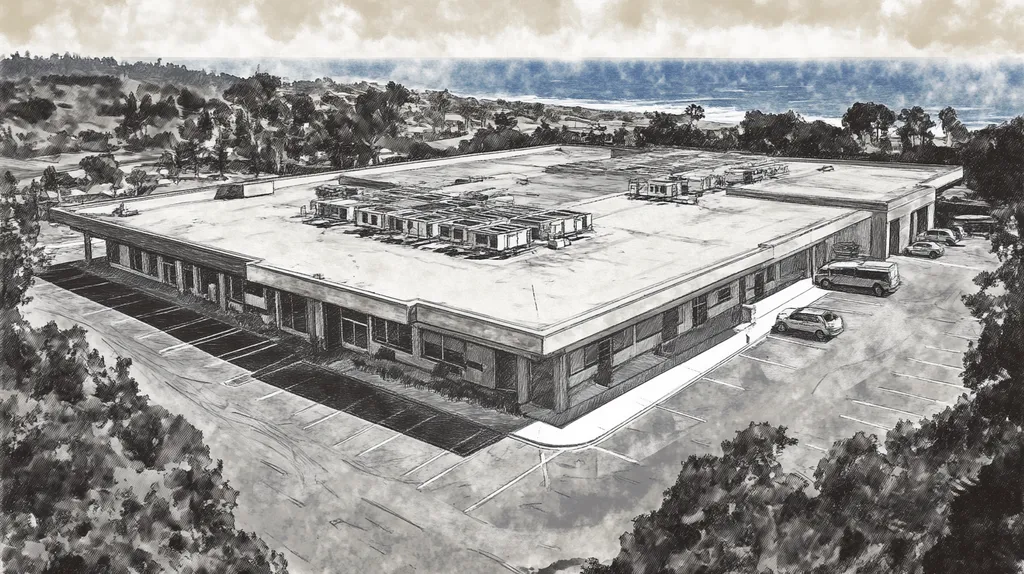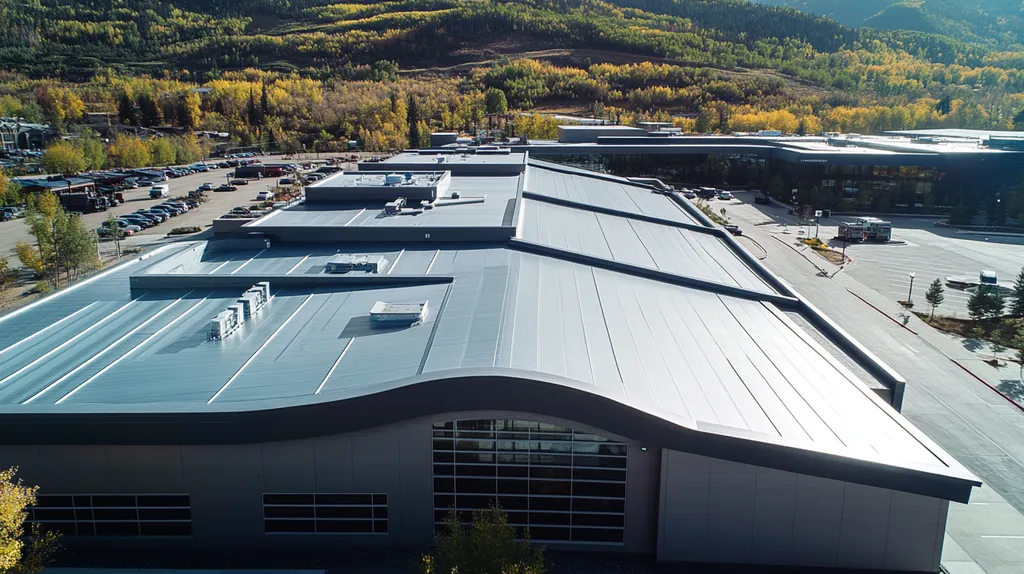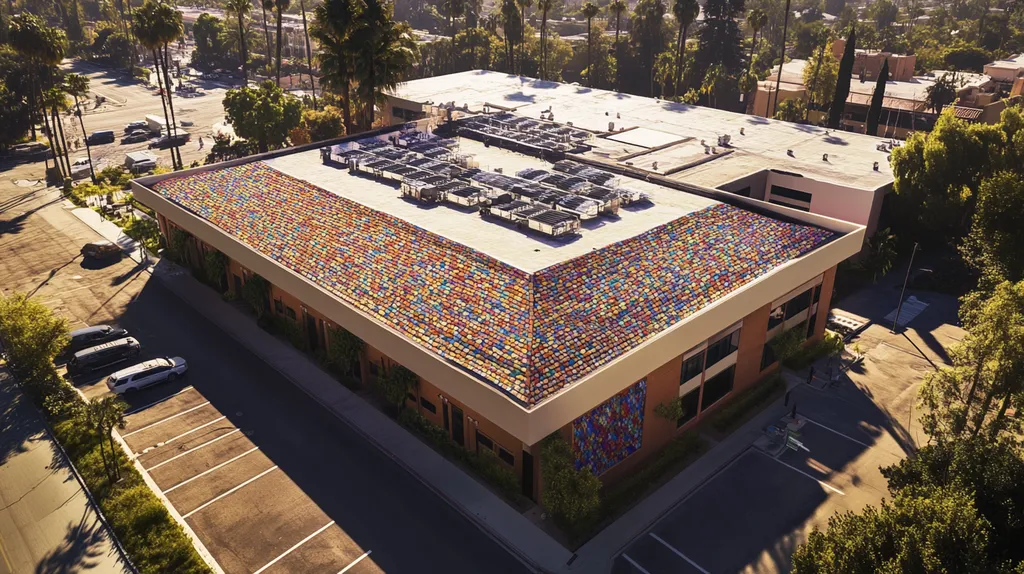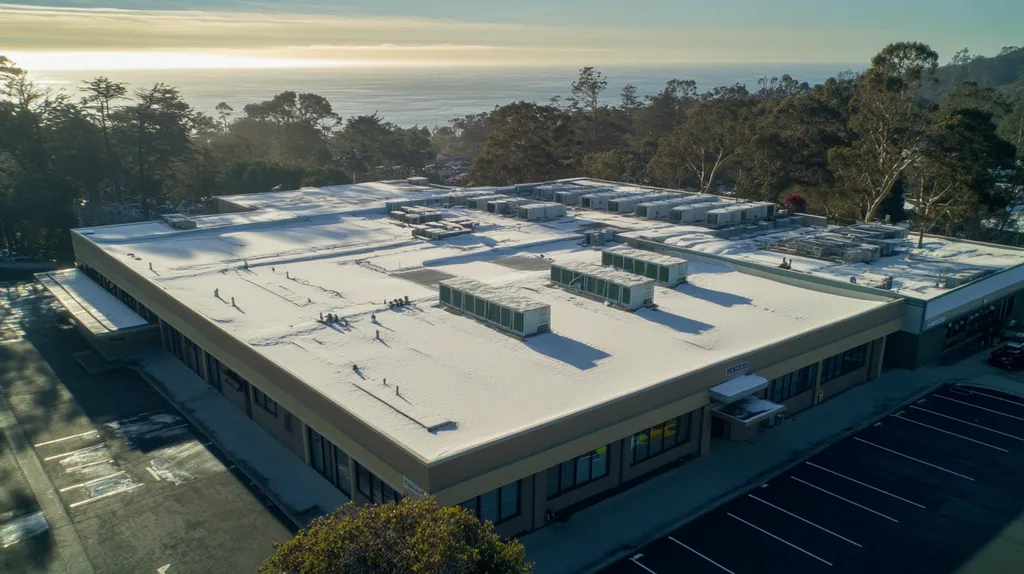Every year, inadequate commercial roof warranty coverage leads to over $2.1 billion in preventable damage across U.S. businesses. For property owners and facility managers, selecting the right warranty protection can mean the difference between a minor repair and catastrophic failure that disrupts operations.
With modern commercial roofing systems costing between $250,000 and $800,000, understanding warranty options has never been more critical for protecting these substantial investments.
This comprehensive guide examines the essential elements of commercial roof warranties, from basic coverage types to advanced protection strategies that safeguard your property and business operations.
SECTION 1: THE BASICS EXPLAINED
Commercial roofing warranties represent a critical yet often misunderstood aspect of building protection. With the average commercial roof replacement costing between $250,000 and $800,000, inadequate warranty coverage can expose businesses to devastating financial risks. Understanding warranty basics isn’t just about paperwork – it’s about protecting your investment, ensuring business continuity, and maintaining property value.
What It Is (In Plain Language)
A commercial roofing warranty serves as a legal guarantee that protects your investment against specific defects, failures, or performance issues. There are three main categories: standard manufacturer’s warranty covering product defects, workmanship warranty protecting against installation errors, and extended manufacturer’s warranty encompassing both materials and labor. (source: Owens Corning Roofing Blog)
Coverage terms vary significantly between warranty types. Standard warranties typically focus on material defects but may exclude labor costs after an initial period. Workmanship warranties specifically address installation quality but usually have shorter durations.
Extended warranties offer the most comprehensive protection by combining material and labor coverage. These premium options often include regular inspections and maintenance requirements to maintain validity.
Duration ranges from 5 to 30 years, depending on the warranty type and roofing system installed. Premium systems typically come with longer coverage periods and more extensive protection.
Why It Matters (To Your Building)
Proper warranty coverage directly impacts your building’s operational reliability and financial security. A single major roof failure can result in hundreds of thousands of dollars in damage to inventory, equipment, and interior finishes.
Beyond protecting against repair costs, warranties often include valuable maintenance guidelines. Following these requirements helps prevent problems before they develop into major issues.
The type of warranty available for your roof often indicates the quality of materials and installation. Higher-grade systems qualify for more comprehensive coverage, reflecting their superior durability and performance.
Warranty coverage can significantly influence property value and insurance rates. Buildings with strong warranty protection often command higher resale values and may qualify for reduced insurance premiums.
How It Works
Effective warranty protection requires active management and compliance. Most warranties mandate regular inspections, documented maintenance, and prompt reporting of any issues.
Property owners must maintain detailed records of all roof-related activities. This includes inspection reports, maintenance records, and repair documentation to validate warranty claims.
When problems arise, immediate notification is essential. Most warranties specify strict timeframes for reporting issues and filing claims, typically ranging from 24 hours to 30 days after discovery.
The claims process typically begins with a professional inspection to verify coverage eligibility. Approved claims then proceed through manufacturer or contractor review before repairs are authorized.
Understanding excluded conditions is crucial. Common exclusions include damage from severe weather events, unauthorized repairs, or failure to maintain proper drainage systems.
SECTION 2: PRACTICAL APPLICATIONS
The reality of commercial roofing warranties carries profound implications for business continuity and asset protection. A single unprotected roof failure can cascade into hundreds of thousands in damage, from inventory losses to business interruption. Understanding how warranties function in real-world scenarios isn’t just about risk management – it’s about safeguarding your organization’s future while protecting the valuable assets beneath your roof.
Common Uses & Examples
Warranty protection serves as the foundation for comprehensive roof asset management. Understanding the distinctions between coverage types helps property owners make informed decisions that align with their risk tolerance and budget constraints.
A major distinction exists between standard manufacturer warranties covering only material defects and comprehensive system warranties that protect against both material and workmanship issues. (source: Owens Corning Roofing)
Large retail facilities often opt for extended system warranties that include regular inspections and maintenance protocols. This approach helps prevent small issues from developing into major problems while maintaining continuous protection.
Healthcare facilities frequently choose warranties with enhanced coverage for sensitive areas like surgical suites or diagnostic equipment rooms. These specialized warranties often include rapid response guarantees and additional moisture protection measures.
When You Need It Most
Critical timing points in a roof’s lifecycle demand particular attention to warranty coverage. The installation period represents a crucial window when proper documentation and compliance measures must be established.
Emergency situations highlight the importance of having clearly defined warranty protocols in place. Property owners must understand exactly who to contact and what steps to take when issues arise to maintain coverage eligibility.
Major building modifications or equipment installations require careful review of warranty implications. Adding roof-mounted HVAC units or solar panels without proper coordination can void existing coverage.
Seasonal transitions, particularly in regions with extreme weather variations, necessitate specific warranty-compliant maintenance procedures. Following these requirements helps ensure continuous protection through challenging conditions.
Interactions With Other Systems
Modern commercial roofs function as integrated components within complex building systems. Understanding how warranties interact with other building elements helps prevent coverage gaps and maintain comprehensive protection.
HVAC installations represent a common point of warranty interaction. Proper coordination between roofing and mechanical warranties ensures seamless coverage for penetrations and equipment supports.
Lightning protection systems must be installed and maintained according to specific guidelines to preserve roof warranty coverage. Regular inspections help verify that these systems remain compliant with warranty requirements.
Building automation and energy management systems often interface with modern roofing components. Warranty provisions must account for these technological integrations while maintaining clear lines of responsibility for various system components.
SECTION 3: KEY TERMINOLOGY DECODED
Clear understanding of roofing warranty terminology directly impacts the protection of multi-million dollar commercial properties. When facility managers misinterpret crucial warranty terms, it can void coverage or leave critical vulnerabilities exposed. A recent industry analysis revealed that terminology confusion leads to denied claims in over 60% of commercial roof warranty disputes, making precise comprehension of these terms essential for protecting valuable business assets.
Essential Terms Explained
The foundation of warranty protection rests on understanding three distinct coverage types: standard manufacturer’s warranty for product defects, workmanship warranty for installation quality, and extended manufacturer’s warranty combining both material and labor coverage. (source: Owens Corning)
“No Dollar Limit” (NDL) warranties represent the gold standard in roof protection, eliminating financial caps on covered repairs. However, these premium warranties typically require strict maintenance compliance and professional inspections to maintain validity.
Coverage periods define the duration of protection, typically ranging from 10 to 30 years based on system type. Premium roofing systems generally qualify for longer warranty terms, reflecting their superior durability and performance expectations.
Warranty exclusions outline specific conditions that void coverage, including unauthorized repairs, improper maintenance, or damage from severe weather events. Understanding these limitations helps facility managers maintain continuous protection.
Industry Jargon Translated
“Building envelope integrity” refers to how well your roof system prevents water intrusion and maintains internal climate control. This term frequently appears in warranty documentation and directly impacts coverage eligibility.
“Thermal movement” describes how roofing materials expand and contract with temperature changes. Proper accommodation of thermal movement through correct installation and materials selection is often a key warranty requirement.
“Roof assembly” encompasses all components from deck to top layer, including insulation and vapor barriers. Warranty coverage often varies for different assembly components, making this distinction crucial for claim validity.
“Performance criteria” establish measurable standards your roof must maintain to qualify for warranty protection. These typically include water-tightness, wind resistance, and thermal efficiency metrics.
Measurement & Units Simplified
Square footage calculations determine both material requirements and warranty coverage scope. One “square” equals 100 square feet – the standard unit for measuring commercial roofing materials and coverage areas.
Membrane thickness, measured in mils (thousandths of an inch), directly correlates with durability and warranty duration. Premium warranties typically require minimum thickness specifications based on building use and environmental conditions.
Wind uplift resistance ratings indicate maximum wind speeds your roof warranty will cover. These ratings use pounds per square foot (psf) measurements, with higher numbers indicating greater protection against wind damage.
R-value measures insulation effectiveness, with higher numbers indicating better thermal resistance. Many warranties specify minimum R-value requirements to maintain energy efficiency standards and coverage validity.
SECTION 4: DECISION FACTORS
Commercial roofing warranty decisions impact millions in property value and operational continuity. A single misstep in warranty selection can expose businesses to devastating repair costs and operational disruptions. Studies show that 65% of commercial property owners face unexpected roofing expenses due to inadequate warranty coverage. Understanding the intricate balance between cost, performance, and longevity helps stakeholders make informed decisions that protect their investments.
Cost Considerations
Material warranties represent the most basic and affordable coverage option for commercial roofs. While these warranties cover product defects and typically last 10-30 years, they exclude labor costs for repairs or installation issues. (source: DDP)
Premium warranty options demand higher upfront investment but often deliver superior long-term value. These comprehensive packages frequently include scheduled maintenance, emergency response services, and coverage for both materials and labor.
Lifecycle cost analysis reveals that investing in enhanced warranty protection typically reduces total ownership expenses. Properties with premium warranty coverage report 40% lower maintenance costs over a 15-year period.
Budget constraints must be balanced against potential risks and exposure. Organizations should evaluate warranty costs against their risk tolerance and financial capabilities to determine optimal protection levels.
Performance Trade-offs
Warranty selection significantly impacts system performance and reliability. Basic coverage may leave critical vulnerabilities exposed, while comprehensive warranties often mandate higher-quality materials and installation standards.
Enhanced warranties typically require certified installers and premium materials, driving superior performance outcomes. These requirements ensure proper installation and material compatibility, reducing the likelihood of system failures.
Regular inspection and maintenance requirements associated with premium warranties help maintain peak performance. Properties with warranty-mandated maintenance programs report 60% fewer emergency repairs.
Environmental factors and building usage patterns should influence warranty selection. High-traffic areas or facilities with sensitive operations may require enhanced protection levels to ensure consistent performance.
Lifespan & Durability Factors
System longevity correlates directly with warranty coverage levels. Premium warranties typically support longer service life through mandatory maintenance and quality material requirements.
Material grade and installation quality significantly impact durability. Higher-grade systems qualifying for extended warranty coverage demonstrate 50% longer average lifespans than basic alternatives.
Climate considerations play a crucial role in durability expectations. Warranties should align with local weather patterns and environmental stressors to ensure adequate protection.
Proper maintenance remains essential for maximizing system lifespan. Warranty programs that include regular inspections and preventive maintenance help achieve optimal durability outcomes while ensuring continuous protection.
SECTION 5: COMMON CHALLENGES
Commercial roofing warranty challenges represent a critical risk point for property owners, with potential impacts reaching into millions of dollars of damage. Recent data shows that 40% of commercial roof failures occur due to preventable warranty-related issues. Understanding and addressing these challenges proactively can mean the difference between a minor repair and catastrophic system failure that disrupts operations and damages valuable assets.
Frequent Problems & Solutions
Commercial roofing warranties include material warranties, workmanship coverage, system warranties combining both, and comprehensive No Dollar Limit (NDL) warranties that cover repair costs without financial caps. Understanding these distinct coverage types helps property owners select appropriate protection levels for their specific needs. (source: CPRankin)
Membrane failures represent the most common warranty claim trigger, often resulting from improper installation or material incompatibility. Early detection through regular inspections can prevent these issues from escalating into major system failures.
Drainage system deficiencies frequently void warranty coverage when left unaddressed. Installing proper slope and maintaining clear drainage paths helps preserve warranty validity while protecting underlying structure.
Unauthorized repairs or modifications represent another major warranty challenge. Establishing clear maintenance protocols and using only approved contractors helps maintain continuous coverage.
Warning Signs To Watch For
Interior water stains or dampness often indicate developing roof issues before they become catastrophic. Prompt investigation of these symptoms can prevent extensive damage while maintaining warranty coverage.
Membrane blistering or separation at seams signals potential system failure. These conditions require immediate professional evaluation to determine appropriate corrective measures within warranty guidelines.
Excessive ponding water beyond 48 hours after rainfall indicates drainage problems that can void warranty protection. Regular roof inspections should include documentation of drainage performance.
Changes in energy costs may indicate insulation failure or membrane degradation. Tracking utility expenses provides early warning of developing roof system issues.
Preventative Approaches
Implementing comprehensive maintenance programs helps prevent warranty disputes while extending roof life. Documentation of all maintenance activities creates a clear record for potential warranty claims.
Staff training on roof access protocols and equipment installation requirements prevents accidental damage. Creating clear guidelines for all roof-related activities helps maintain warranty compliance.
Regular moisture scanning and infrared imaging can detect problems before they become visible. These diagnostic tools help identify developing issues while repairs remain under warranty coverage.
Establishing relationships with qualified roofing professionals ensures access to warranty-compliant repairs when needed. This network approach helps maintain continuous protection while minimizing response times for urgent issues.
SECTION 6: NEXT STEPS & RESOURCES
Commercial roofing warranty decisions represent critical infrastructure investments worth millions in asset protection. Recent industry data shows that 62% of commercial property owners face unexpected roofing expenses due to warranty oversights within the first five years of installation. With the average commercial roof system costing between $250,000 and $800,000, understanding available resources and next steps becomes essential for protecting these substantial investments.
Questions To Ask Providers
Commercial roofing warranties include material coverage, workmanship guarantees, system warranties combining both, and comprehensive NDL options offering maximum protection. Understanding these distinct categories helps property owners select appropriate coverage levels that align with their risk management strategies. (source: CP Rankin)
Coverage verification questions should address specific exclusions and limitations. Property owners must understand exactly which components, conditions, and types of damage fall within warranty protection.
Response time guarantees and emergency service protocols demand careful examination. Clear documentation of expected response windows for different severity levels helps ensure business continuity during roofing emergencies.
Maintenance requirements and inspection schedules require detailed review. Most warranties mandate specific maintenance protocols, and understanding these obligations prevents inadvertent coverage voids.
Transfer provisions and ownership change implications need thorough investigation. Strong warranty transfer rights enhance property value and protect future stakeholders.
Industry Standards & Guidelines
Building code compliance forms the foundation of warranty validity. Current International Building Code (IBC) standards establish minimum requirements for commercial roofing systems and their associated warranties.
FM Global and UL testing requirements provide benchmarks for system performance. These standardized evaluations help property owners assess warranty coverage against established quality metrics.
ASTM testing protocols verify material compatibility and performance characteristics. Understanding these standards helps ensure warranty coverage aligns with actual system capabilities.
Energy efficiency requirements increasingly impact warranty considerations. Programs like ENERGY STAR® establish performance criteria that may affect warranty terms and coverage levels.
Environmental regulations can influence warranty provisions and compliance requirements. Understanding these impacts helps maintain continuous protection while meeting sustainability goals.
Further Learning Simplified
Industry associations offer comprehensive educational resources focused on warranty management. Organizations like NRCA and IIBEC provide training programs specifically designed for property owners and facility managers.
Manufacturer certification programs deliver detailed insights into specific system warranties. These programs often include hands-on training and documentation requirements essential for maintaining coverage.
Professional development courses address emerging warranty considerations. Topics include sustainable roofing systems, advanced monitoring technology, and integrated building management approaches.
Online learning platforms provide accessible warranty education options. Web-based resources include interactive modules, case studies, and real-time updates on industry developments.
Peer networking groups facilitate knowledge sharing about warranty experiences. These communities help property owners learn from others’ experiences while building valuable professional connections.
The Bottom Line
With over $2.1 billion in preventable commercial roof damage occurring annually due to warranty oversights, the stakes for proper coverage have never been higher.
Understanding and implementing appropriate warranty protection represents a critical business decision that impacts both immediate operations and long-term property value.
The complexity of modern roofing systems demands careful attention to warranty selection, documentation requirements, and ongoing compliance measures.
Property owners who invest time in understanding their warranty options and implementing proper management protocols protect not just their buildings, but their business continuity and financial security.
As commercial roofing technology continues to evolve, staying informed about warranty options and requirements becomes increasingly essential for maintaining comprehensive asset protection.
FREQUENTLY ASKED QUESTIONS
Q. What is a commercial roof warranty?
A. A commercial roof warranty is a legal guarantee that protects against defects and performance issues. It typically includes three types: manufacturer’s warranty for defects, workmanship warranty for installation issues, and extended warranties for comprehensive coverage. Understanding these distinctions is vital for protecting your investment and ensuring your business remains operational.
Q. How do commercial roof warranties protect businesses?
A. These warranties safeguard businesses from major financial losses due to unexpected roof failures. They often cover repair costs, ensuring you don’t face significant expenses from issues like leaks or structural damage. Additionally, adhering to maintenance guidelines can prevent major problems, helping to maintain consistent operations and protect valuable assets beneath your roof.
Q. What common issues can void a commercial roof warranty?
A. Common issues that can void a warranty include unauthorized repairs, inadequate maintenance documentation, or failure to address drainage system problems. Not maintaining clear and effective maintenance records can result in denied claims. Understanding these potential pitfalls is crucial to ensuring your coverage remains valid and your investment is protected.
Q. How do I choose the right warranty for my industrial roof?
A. Choosing the right warranty involves assessing your building’s specific needs, risks, and budget constraints. Consider the roof’s material grade, the durability required based on environmental conditions, and whether you need comprehensive coverage for both materials and labor. Higher-grade systems typically qualify for more extensive warranties, reflecting their performance and reliability.
Q. What strategies can help maintain my warranty coverage?
A. To maintain coverage, establish a proactive maintenance program that includes regular inspections and documentation of all roof-related activities. Train staff on roof access protocols and ensure only approved contractors perform maintenance or repairs. Regularly revisit your warranty terms to stay informed about compliance requirements and respond promptly to any issues that may arise.
Q. How does roof maintenance impact commercial roof warranties?
A. Regular roof maintenance is crucial for maintaining warranty validity and extending the roof’s lifespan. Many warranties require specific documentation of maintenance activities, including inspections and repairs. By adhering to these maintenance protocols, you ensure ongoing protection and mitigate the risk of major system failures that could disrupt operations.
Q. What are some useful resources for understanding warranties?
A. Useful resources include industry associations like NRCA and IIBEC, which provide educational materials and training on warranty management. Additionally, manufacturer certification programs can offer detailed insights into specific warranty terms and requirements. Online platforms also provide access to interactive learning, case studies, and real-time industry updates, helping property owners stay informed and prepared.










